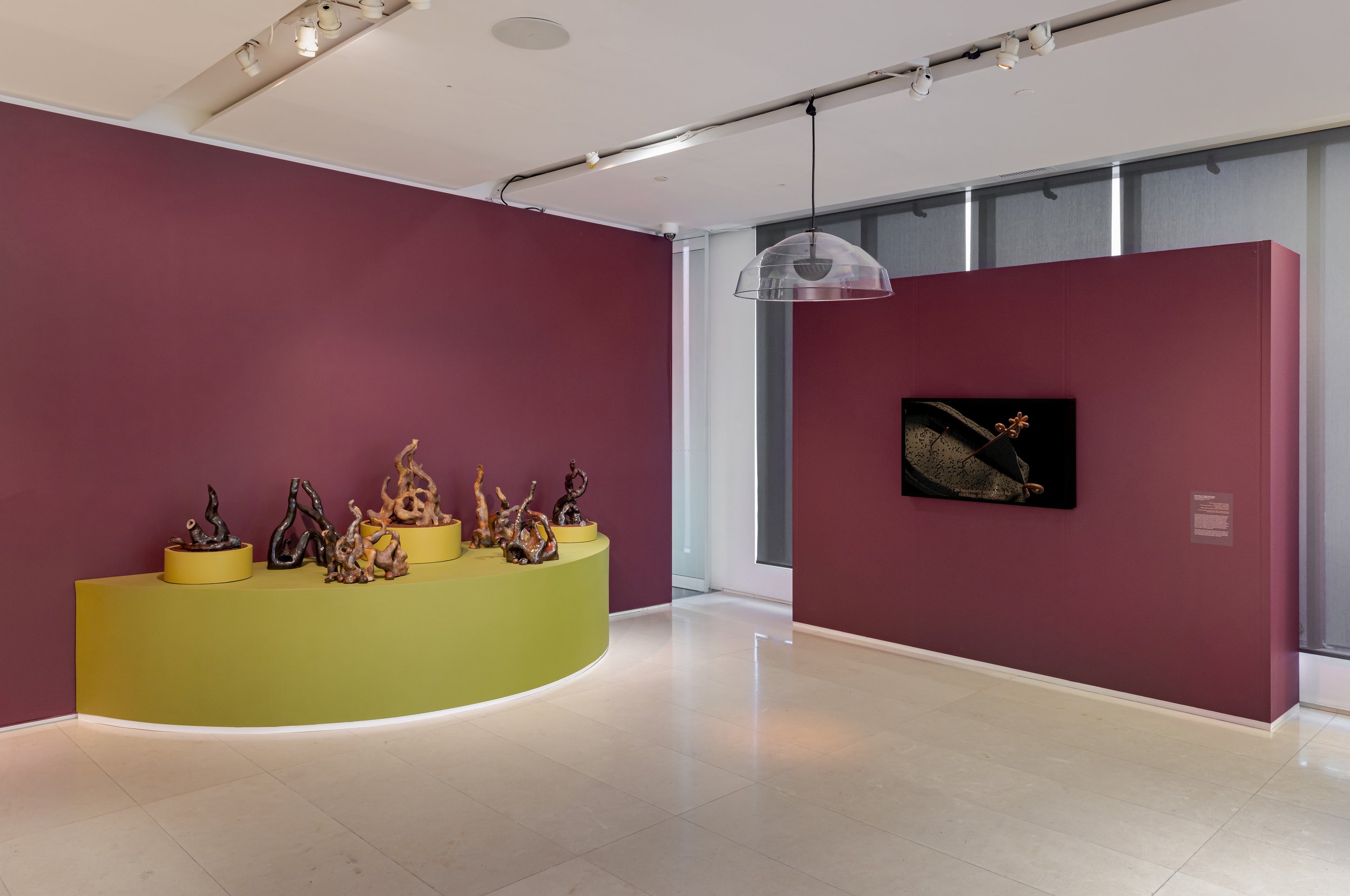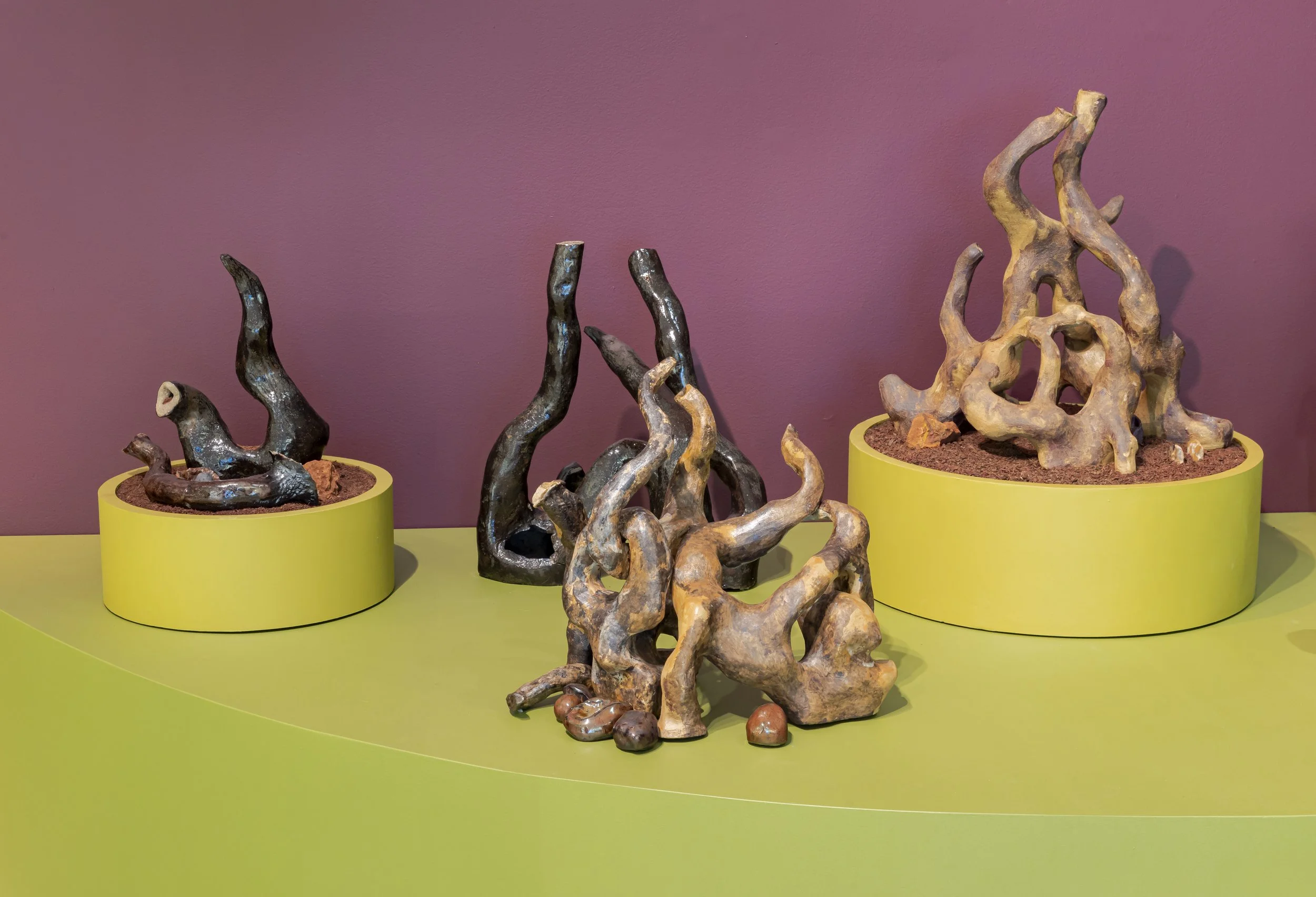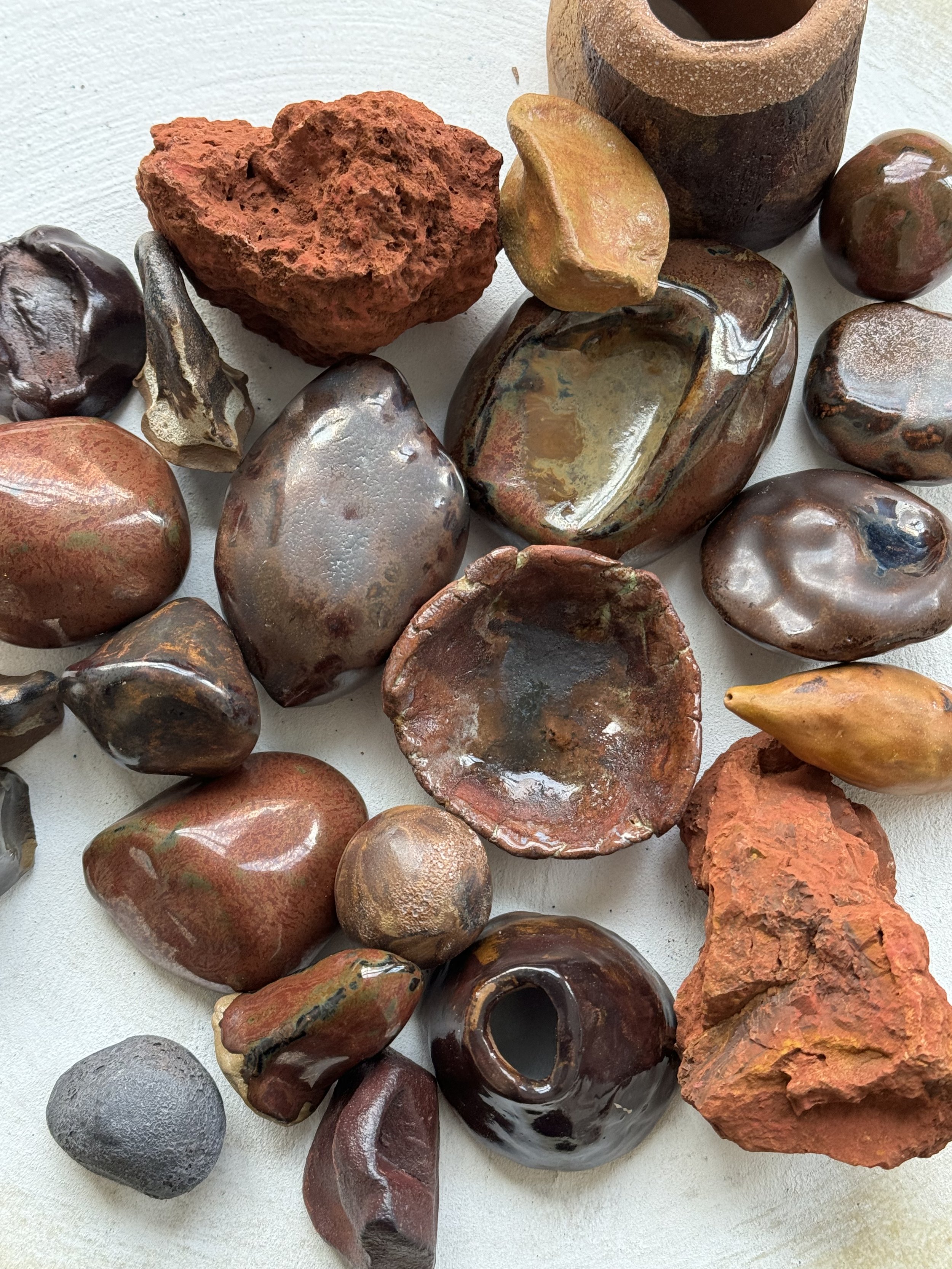Rhizomatic Placemaking, 2023-2024
Clay, glaze, pigment
Rhizomatic Placemaking explores the mangrove ecosystems as a site of refuge and nourishment across Afro-Atlantic geographies. From the 15th century, when the European conquest for land and labour began, Portuguese colonists considered the mangroves along the coast of West Africa as impenetrable and disease-ridden environments. However, for their nearby inhabitants, these dense swamplands were known to be sources of firewood, food, medicine, as well as sanctuary for those escaping captivity during the trans-Atlantic slave trade.
The hand-built ceramic organic forms summon the entangled roots of the mangrove trees, also known as ‘breathing roots’ because of their specialized ability to intake extra oxygen. This installation considers how the mangrove straddles the hybrid and porous boundaries between land and sea and rootedness and fluidity. Lowe mediates on the multiplicity of encounters and entangled relations between humans and non-human kin. These works explore how African and Afro-descendant place-making underscores the ways people, plants, insects, microbes, shellfish, and tides bridge new understandings of identity and land relationships at the periphery of the Atlantic world.
This series was shown at the Gardiner Museum in 2024 as part of Genealogies of Sustenance, curated by Sarah Edo.
“Situated between land and sea, where the land is neither solid nor liquid, the “in-between-ness” of the mangrove swamp shaped a distinctive sense of “place” for diasporic people who found themselves in between two continents, two worlds, and two social states: free and enslaved. “
- Judith Carney, “The mangrove preserves life”: Habitat of African survival in the Atlantic world, Geographical Review 2017








